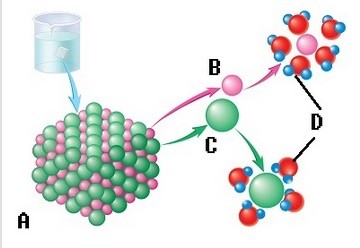 The sodium chloride molecule breaks apart in water. What does "D" represent?
The sodium chloride molecule breaks apart in water. What does "D" represent?
A. Dissociation
B. Sodium ion
C. Salt crystal
D. Water molecule
E. Chloride ion
Answer: D
You might also like to view...
The cardiac output is equal to
A) the product of heart rate and blood pressure. B) the difference between the end-diastolic volume and the end-systolic volume. C) the product of heart rate and stroke volume. D) the stroke volume less the end-systolic volume. E) the difference between the stroke volume at rest and the stroke volume during exercise.
The ________ joint is an immovable joint that holds bones of the axial skeleton tightly together to protect the ________
A) vertebrocostal, lungs B) sternocostal, heart C) tibiofibular, pelvic organs D) suture, brain
What type of hormone triggers the synthesis of new proteins within cells?
A) Protein hormones B) Water soluble hormones C) Paracrines D) Steroids
Derivatives of ________ give feces a brown color.
A. cholesterol B. urobilinogen C. bilirubin D. guanylin